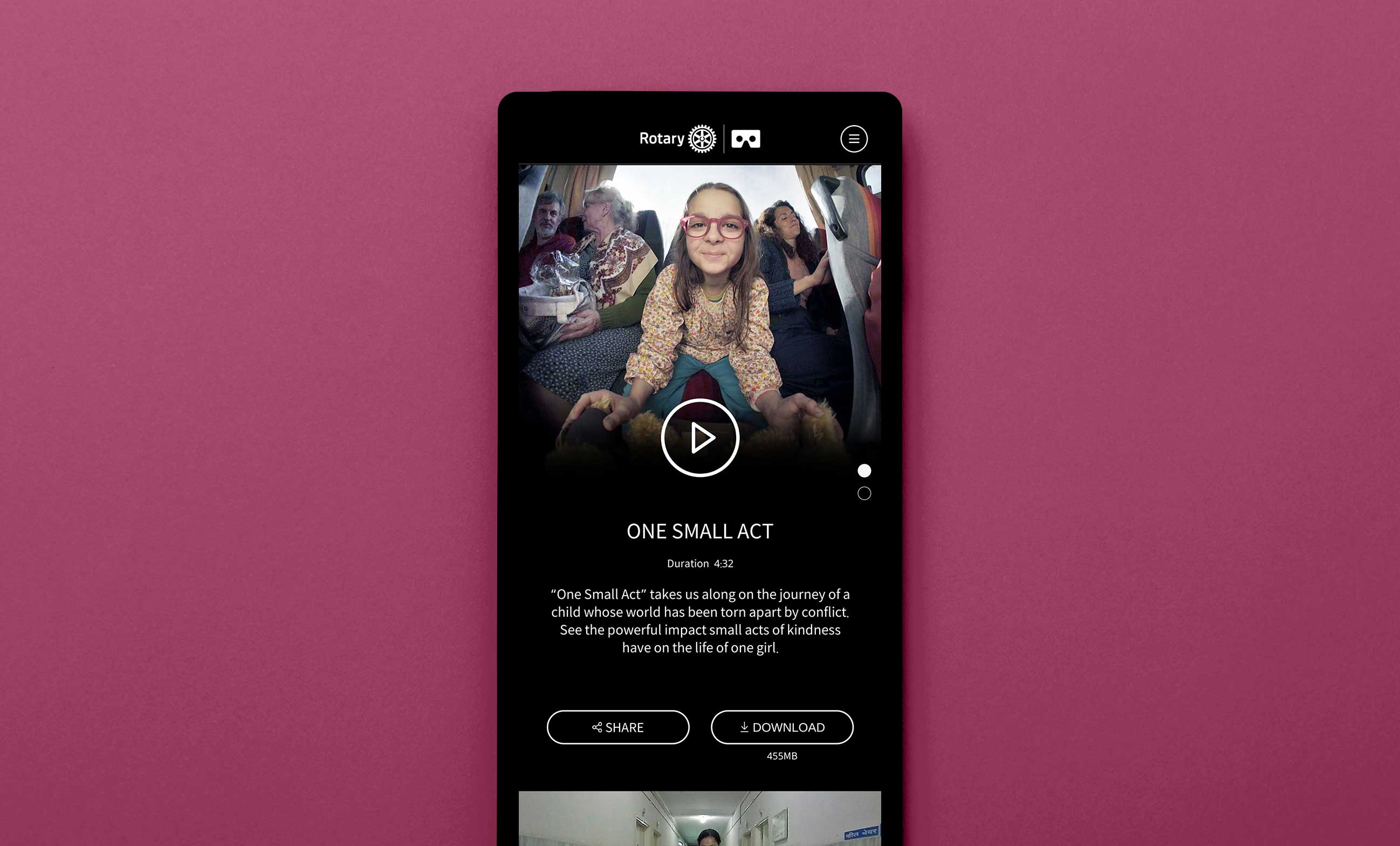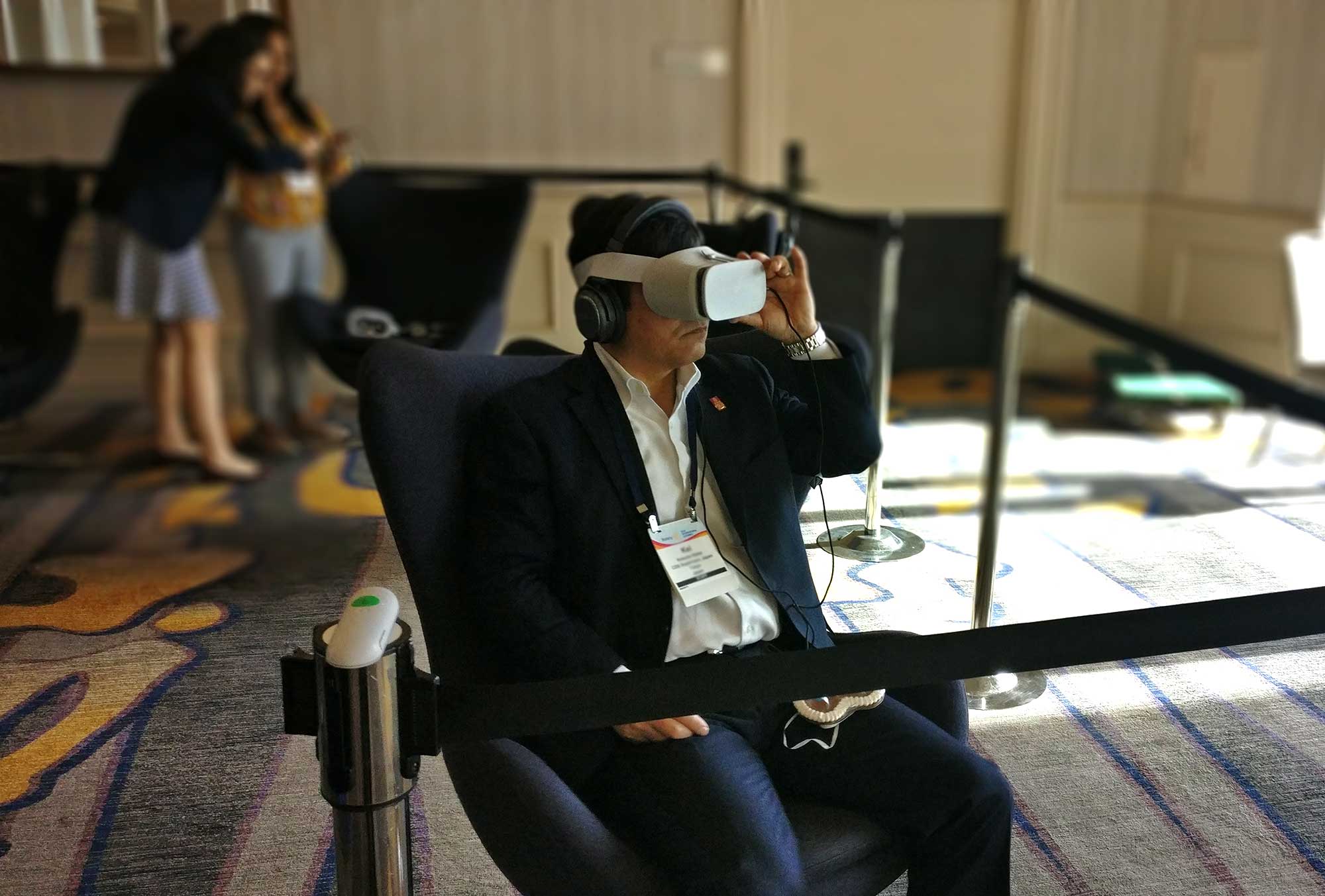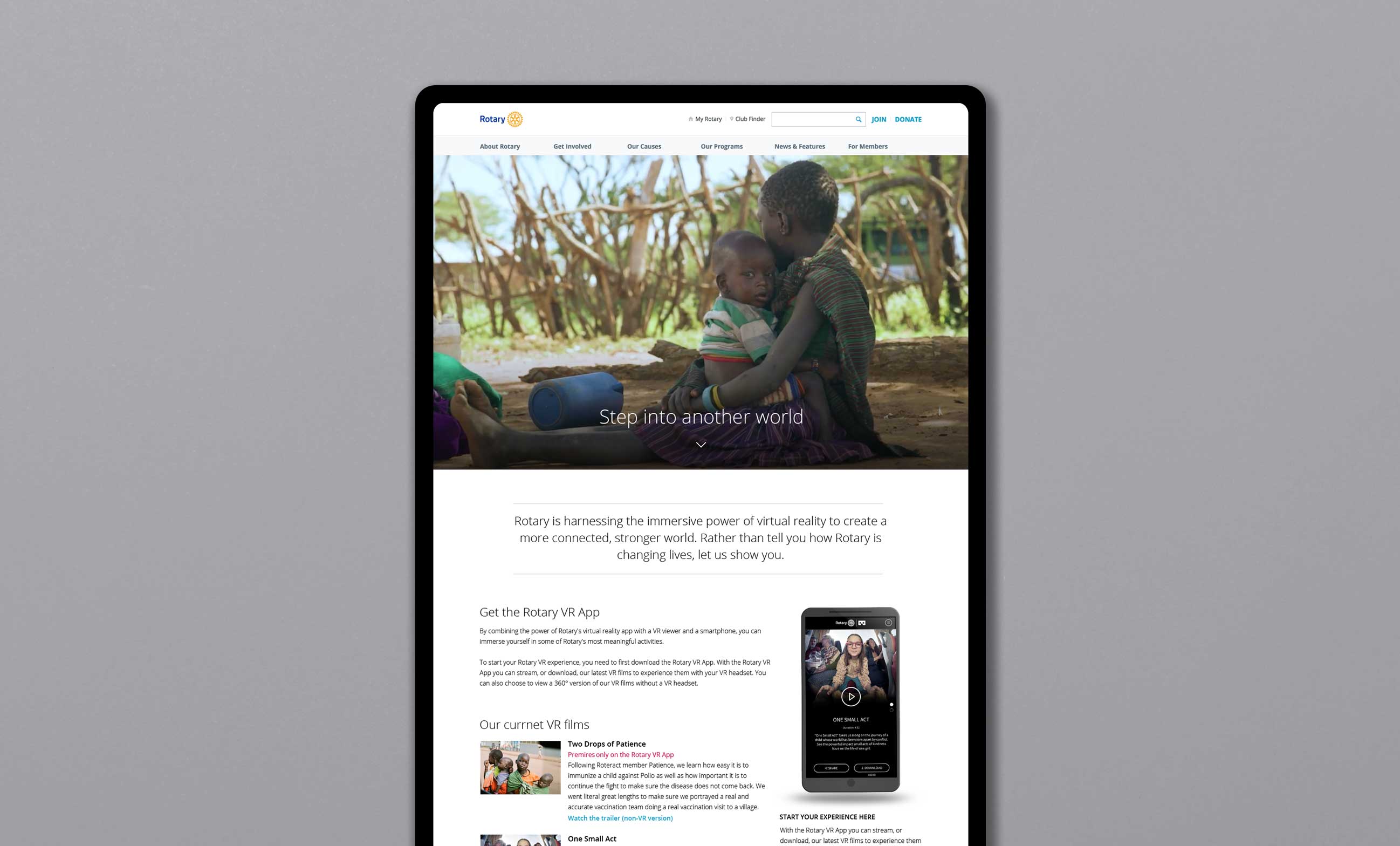Industry
Nonprofit
Client
Rotary International
VR App
Project Overview
Summary
Rotary, partnering with IdeaStudio, produced a number of short films for VR focusing on projects around the world. These films are delivered through the Rotary VR mobile app for Android and iOS. The app would serve as the official platform for current and future Rotary VR films.
Members would then be encouraged to leverage these VR films to attract new members, fundraising, and cause awareness. Resources, such as social templates, event guides, PR outlines, and other materials on rotary.org.
My Role
I worked with our team to brand the IdeaStudio VR app and improve interactions for our audiences. In addition, I was tasked with adding a new VR section into the information architecture and designing the landing page. Lastly, I conducted user interviews at a member event in San Diego. This was to gain insight into user sentiment and general feedback on how they might leverage it as a marketing/PR tool.
Key deliverables: Responsive UI design, information architecture. user research, user flow, interaction design, app theming.
UX Research
Gathering feedback on the VR experience onsite with users
Design Process
My process usually moves through a four step process based on the double diamond design process. This assures the outcome is as consistent as possible.
Research to collect data on the problem
Analysis of the data to understand the problem
Ideate solutions informed by analysis of the problem
Testing design solution effectively solve the problem
Research
UX Audit
I conducted an UX audit to uncover any usability issues with the app. There were issues with the navigation, system status transparency, and confusing UI elements (CTA elements were the same as static icons).
User Research
I partnered with project and event staff to conduct research at an annual member's event in San Diego. There I conducted direct observation and survey interviews with over 50 users. Users were primarily from United States and Canada, with the others from India, United Kingdom, Australia, Japan, Netherlands, Sweden, Thailand, and Turkey.
Users were asked to download the Rotary VR app (beta) to their phone and, without instruction, watch a film.
Users
The intended audience was very broad, as the intent is that it would be a success if everyone used the app. However, I created two cohort groups:
Facilitators/instructors users are members or staff that are using the app for marketing and PR. These users have to know how to use the app and be able to assist and train others to use it.
General public users gain awareness of the app from organic or direct sources. These users might have no context into what Rotary is or have experienced VR.
Analysis
Themes
Users were excited about using VR and using it to attract new members and donations. In the survey, they were asked how likely they would be to recommend Rotary VR to a friend or colleague which rendered a Net Promoter Score of 83. However, users did not know exactly how they would incorporate VR as a marketing tactic. A follow up question was often if Rotary would be providing training or other guidance in how to use VR.
Pain Points
While users were excited about the concept of VR, the experience of using the Rotary VR app was frustrating. Here are some of the notable examples.
Many users were unable to actually get a movie to play without staff intervention. This was due to unclear in-app instructions, user flows, and system status transparency. When a user tapped to watch a movie, the app seemed to just do nothing. This was because it was buffering a portion of the film without informing the user. This was even more of a problem with slower bandwidth connections.
Users did not intuitively know to navigate the available list of movies. The app used a card carousel that was not obvious to users. The UI did not provide any affordances to understand a horizontal swipe would advance the carousel.
Ideate
Resolving Issues
I worked closely with the app developers to resolve issues research surfaced. This included proving workflow updates, simplifying browsing available movies, and adding system status when streaming or downloading.
Supporting Users
User feedback pointed to a clear need for training, informational, and other resources. The project team worked with marketing to develop resources on how to use VR for promotion, events, fundraising, and more. All communications regarding Rotary VR was funneling traffic to the Rotary VR landing page. I added a "Club & Member Resources" section with all the support resources.
Testing
Once the vendor updated the app, we conducted some internal "guerrilla testing" with staff unrelated to the project. The feedback we received pointed to the major issues with the app were resolved.
Outcome
The improvements to the app included:
Changing the movie browse interaction from a horizontal carousel to a vertical scroll
Movie cards were less than the vertical viewport avoiding a false bottom effect and improving usability
System processes were surfaced to reduce user frustration
Research highlighted the need for specific types of resources
What did I learn?
Ethnographic studies work. With something like VR, it was required to actually be onsite to observe how users interact to both the software and hardware. Watching how people resolve problems with physical products is very insightful.
One place for everything. The Rotary VR landing page was intended for organic and targeted traffic. Because if this, the page was created on rotary.org, the public website. However, once the resources for members were developed, the decision was made to add them to that landing page. While I felt those might better be kept in a member specific area, making distinct "for members" section a workable solution.





